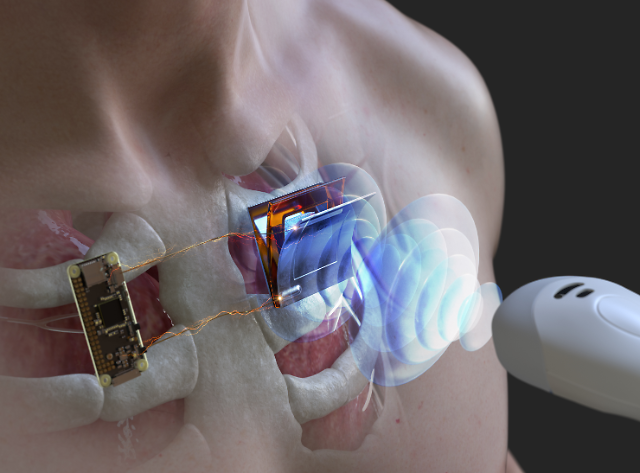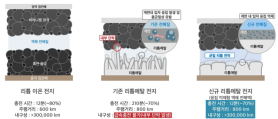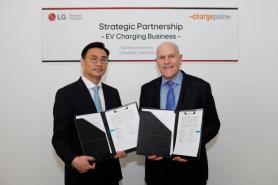
[Courtesy of KIST]
Wireless charging has only been used lately mainly for portable devices such as smartphones, smartwatches and electric toothbrushes due to its short charging distance and poor efficiency. The popular inductive wireless charging technique uses copper foils to generate an electromagnetic field to transfer energy to the portable device's inductive coil which converts the alternating magnetic field to direct current. However, the induction charging method requires the charger and the portable device to be in contact with each other.
The Korea Institute of Science and Technology (KIST) said that its research team chose ultrasonic waves instead of electromagnetic waves as a delivery medium to develop an acoustic energy transfer system. Researchers created a special triboelectric generator component that transmits ultrasonic waves to convert energy into electricity.
Through an underwater demonstration, KIST researchers were able to transfer the energy of eight megawatt-hours to a device that is six centimeters (2.3 inches) away with an energy transfer efficiency of four percent, enough to simultaneously light up some 200 light-emitting diodes (LEDs) or power up a Bluetooth-based sensor to deliver data. The efficiency of conventional acoustic charging systems is just about one percent.
The charger did not create much heat because its energy conversion efficiency was very high, KIST said, adding that the acoustic wireless charging technique can be safely used for charging electronic implants because ultrasonic waves have been used for nearly one hundred years in the medical sector to analyze body organs and fetuses.
"This technology has shown that it is possible for implants can be operated with acoustic charging method," KIST researcher Song Hyun-cheol said in a statement on March 23. The professor said that if the safety and efficiency of acoustic wireless charging are improved, the technique can be used in implants and deep-sea sensors.
Copyright ⓒ Aju Press All rights reserved.




